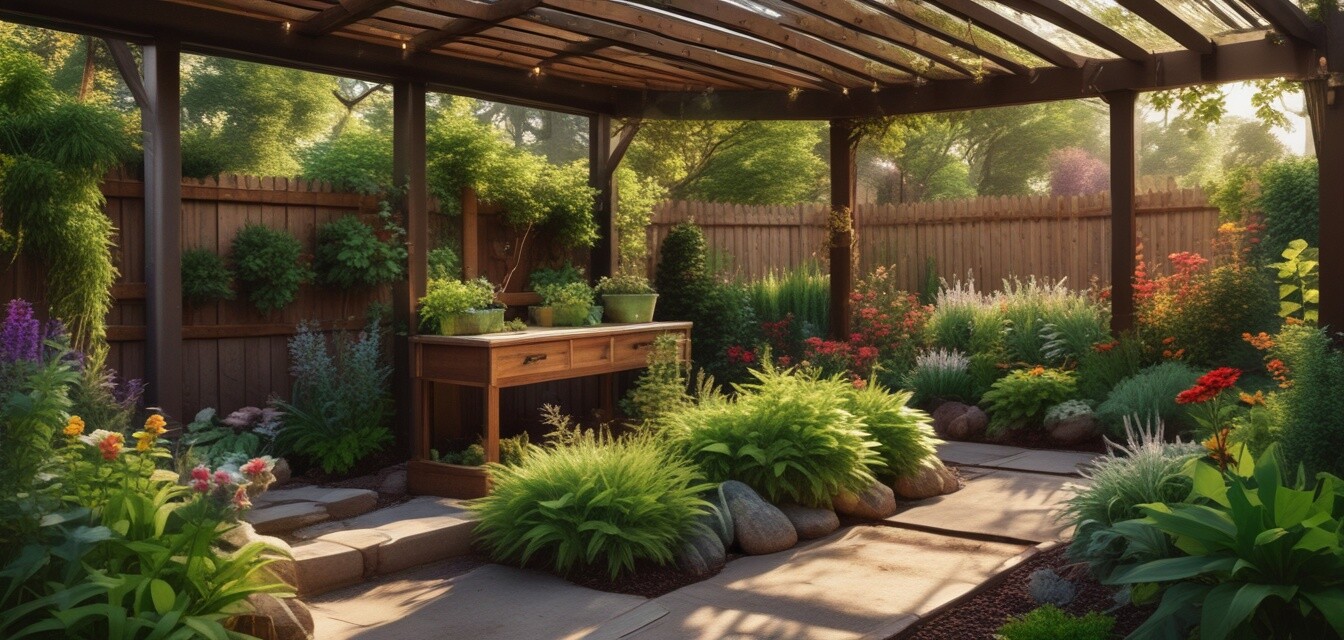
Eco-Friendly Garden Design Ideas
Key Takeaways
- Embrace native plants to enhance biodiversity.
- Incorporate composting systems for sustainable waste management.
- Utilize rainwater collection systems for irrigation.
- Create wildlife habitats to support local fauna.
- Design for low-maintenance and resource efficiency.
Creating an eco-friendly garden doesn’t just contribute to the health of the planet; it also enhances the beauty of your outdoor space. With thoughtful planning and innovative design ideas, you can cultivate a garden that thrives sustainably while providing a peaceful retreat. Let’s explore some inspiring eco-friendly garden design ideas that can transform your landscape.
1. Embrace native plants
Using native plants is one of the most effective ways to design an eco-friendly garden. These plants are well-adapted to local soil, climate, and wildlife, requiring less water, fertilizers, and pesticides.
Benefits of native plants
- Low maintenance: Native plants are resilient and adapted to survive local conditions.
- Biodiversity: They attract pollinators such as bees and butterflies.
- Water conservation: Native plants typically require less watering.
2. Incorporate a composting system
Composting is an excellent way to promote sustainability. By converting kitchen scraps and yard waste into nutrient-rich compost, you can reduce your environmental footprint and enrich your garden soil.
Basic composting methods
| Method | Description | Benefits |
|---|---|---|
| Bokashi | A fermentation process that breaks down organic waste quickly. | Great for compact spaces, soil conditioner. |
| Traditional compost | Layering green and brown materials to decompose over time. | Generates rich compost suitable for gardens. |
| Worm composting | Using worms to convert food scraps into compost. | Fast process, produces high-quality worm castings. |
3. Utilize rainwater collection systems
Lorem ipsum dolor sit amet, consectetur adipiscing elit. Vivamus lacinia odio vitae vestibulum. Proin sagittis nisl id interdum aliquam, eros urna convallis arcu, at auctor nulla leo in sapien.
Components of a rainwater harvesting system
- Gutters and downspouts: Collect rainwater from roofs.
- Storage tank: A cistern or barrel to hold collected rainwater.
- Distribution system: A method to distribute water to plants.
4. Design for wildlife
Your garden can provide valuable habitat for local wildlife. By creating diverse environments, you support the ecosystem while enjoying the benefits of increased biodiversity.
Creating wildlife-friendly spaces
- Birdhouses and feeders for attracting birds.
- Insect hotels to encourage pollinator visits.
- Water features for drinking and bathing opportunities.
5. Focus on resource-efficient design
Your garden design should be focused on reducing resource inputs while maximizing outputs. Consider integrating hardscapes and plants that work harmoniously together.
Efficient gardening practices
- Drip irrigation systems to minimize water waste.
- Raised beds for improved soil management and accessibility.
- Mulching to reduce weeds and retain moisture.
Conclusion
Eco-friendly garden design is about more than aesthetics; it's a commitment to the environment. By using sustainable practices and creating landscapes that support biodiversity and resource efficiency, you can cultivate a beautiful outdoor space that enhances your home and uplifts the planet. For more ideas, explore our Garden Inspiration category.
Pros
- Encourages biodiversity and natural ecosystems.
- Reduces water and fertilizer use.
- Promotes sustainable living practices.
Cons
- Initial effort and research may be required.
- Transition may take time for established gardens.
- Limited plant choices in some regions.